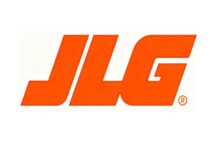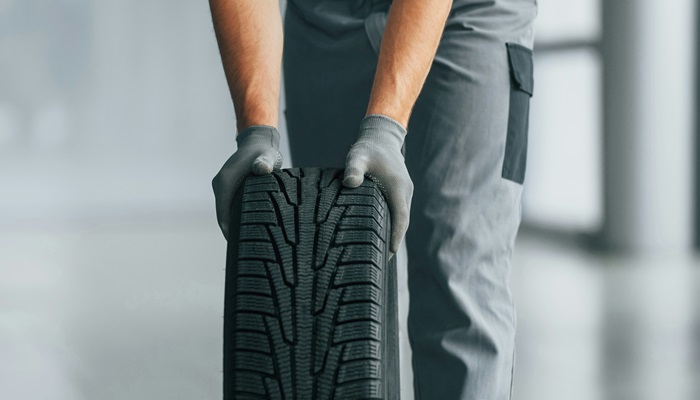Equipment Track Care Tips
Maintenance of a skid steer involves periodic replacement of tracks. Most often, owners of special equipment expect a certain period of operation of this “consumable,” but the actual terms do not always coincide with the expected ones. At the same time, it is not necessarily a matter of product quality. Sometimes, the problem lies in operational features.
Ground Pressure Is Key
Buying quality tracks at Ontrac Parts Rubber Tracks is only halfway to success. Your task is to take good care of the tracks. A potential reason for premature track wear is incorrect ground pressure caused by wrong width tracks.
A narrow track can have too much ground pressure that can accelerate the rubber track wear. Examples of why ground pressure is key r in the operation of a skid steer :
- Increased Pressure to the ground. The narrower surface can lead to more stress on the tracks with heavy loads, which accelerates wear on the rubber and tread.
- Inadequate Traction: Too narrow of a track can lead to spinning, sliding, or getting stuck. Which will wear the track down more rapidly
In all cases, the service life of the rubber is also significantly reduced. It can be prevented using the manufacturer’s instructions, which indicate the appropriate width for certain operating conditions. Such documentation is supplied when buying construction equipment.
The weight of the cargo being moved must also be taken into account. The higher the weight, the wider the track pressure to the ground should be. Otherwise, the machine will start to dig down, which can affect the condition of the tread and raise risk of getting stuck.
Other Factors
There are universal recommendations that apply to all skid steers, regardless of operating conditions and the cargo being transported:
- Surface Conditions, Rough and uneven surfaces will cause more friction accelerating the rubber compound condition. Harsh surfaces that have sharp objects such as certain rocks and metal should be avoided or lightly used over. Harsh surfaces can cause cracking in the tread or rubber compound. Certain tread patterns have uses cases that are better for harsh conditions, there are also specific tread patterns for lighter surfaces.
- Do not allow the tracks to spin. This is typical for those situations when the operator begins to earthmove or carry loads. It is essential that the hydraulics are used at this time. If you rely on the movement of the machine, then due to the significant weight of the load, traction may be lost, which leads to the tracks Continuous operation of the rubber tracks like this will lead to treadwear.
- Do not attempt to overcome obstacles unless necessary. Many operators are confident that skid steers can easily handle driving over sharp objects, stones, and debris. Most often, neglect of caution leads to repairs to the undercarraige, which is also associated with replacing tracks. The impact on tracks can be slightly reduced by carefully and slowly operating over objects as such.
- Do not forget to remove dirt and technical fluids from the tracks and undercarriage parts. The equipment must be washed regularly to eliminate the possibility of harmful components affecting the condition of the rubber and metal links. Leaving mud or dirt in the undercarriage can damage the bearing in the rollers, with non lubbed or stuck rollers it will cause wear on the core of the rubber track.
- Do not rush when operating the skid steer. This significantly increases the temperature of the rubber, which increases the likelihood of damage when overcoming another obstacle at the enterprise or construction site. Maintain a good speed, High speeds on certain surfaces will increase friction and heat. Indirect benefits of careful driving are also relevant – the operator will be able to drive around road elements that can damage the vehicle.
- Choose only those brands that have already proven themselves. Spare parts, consumables, and other components used for the repair and maintenance of special equipment must be supplied by reliable manufacturers. The reputation of such companies speaks for itself. Saving on parts leads to constant costs.
- Move slowly at sub-zero temperatures. Another factor affecting the rate of tread wear. Cold weather can reduce the flexibility of the rubber track to overcome objects and absorb impacts smoothly. Exposure to high heat and sun exposure for extensive amounts of time can cause rubber compound damage like cracking.
- Monitor operating hours. Some tracks have restrictions on continuous operation, which is indicated by the manufacturer in the accompanying documents and instructions. Therefore, it is better not to use the same equipment around the clock. This will have a beneficial effect on the condition of other parts, units, and components.
- Instruct operators. Often, operators are not aware of the features of skid steer operation that affect the condition of tracks. Therefore, it is important to constantly remind about such nuances in order to save the company’s money.
How to Check the Rubber Tracks
The condition of the rubber tracks must be checked before each shift—this is included in the operator’s list of daily actions. According to the instructions, the driver must check the tracks for damage and tightness to have no sagging.
Visible signs of track wear and the reasons for their appearance:
- Insufficient tread depth. Physical wear and use of tracks of dubious quality.
- Scuffs, torn fragments, and side cuts can happen. They are caused by the skid steer running over sharp objects, catching curbs or metal thresholds, or driving on significant ground damage.
- Uneven wear of tracks, the presence of side scuffs. Careless driving, sharp turns, overloading, transporting cargo with an offset center of gravity, and operating the skid steer with low ground pressure.
- Deep Cracking in the rubber on the inside or on the tread. Thinning of the track due to physical wear. Damage to the structure of the track material is due to impact, insufficient track tightness, and uneven load on tracks due to operating errors.
If one track is damaged, finding the same one with a suitable remaining wear is difficult. Often, this does not make sense, so rubber tracks are usually replaced as a set.
Worn, sagging, and damaged rubber tracks increase the risk of the skid steer tipping or sliding, which can cause injury and damage to the load. Tracks with insufficient tread depth lose grip. Less tread on a rubber track causes more resistance to move which is often the cause of increased fuel consumption. Since most load falls on the front axle, the front wheels wear out faster.
Conclusion
Compliance with the load capacity recommendations is a vital aspect of ensuring the durability and safety of the skid steer loader. Exceeding the maximum permissible load can have severe consequences for both the rubber tracks and the entire loader.






























